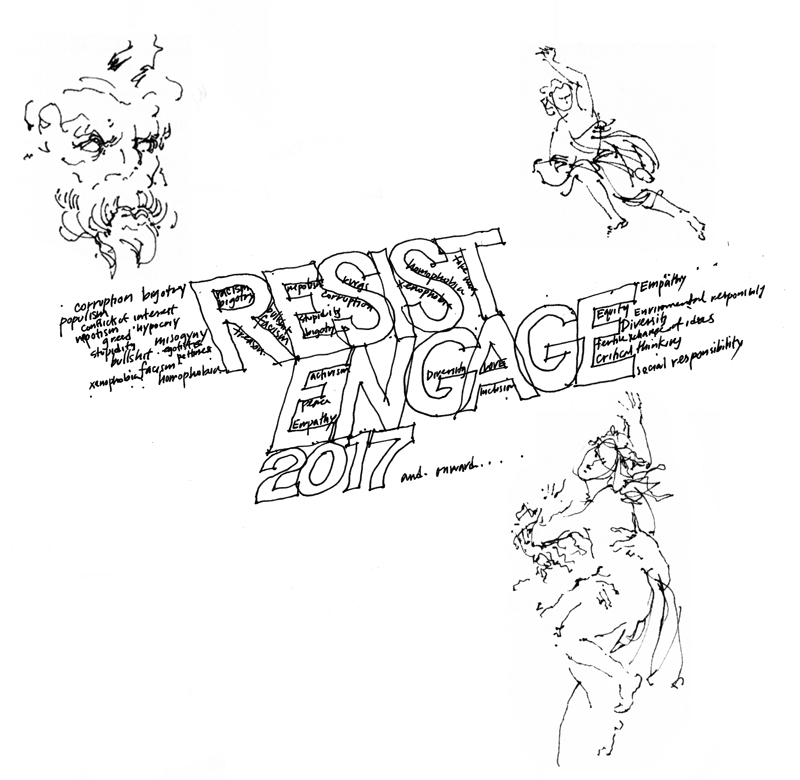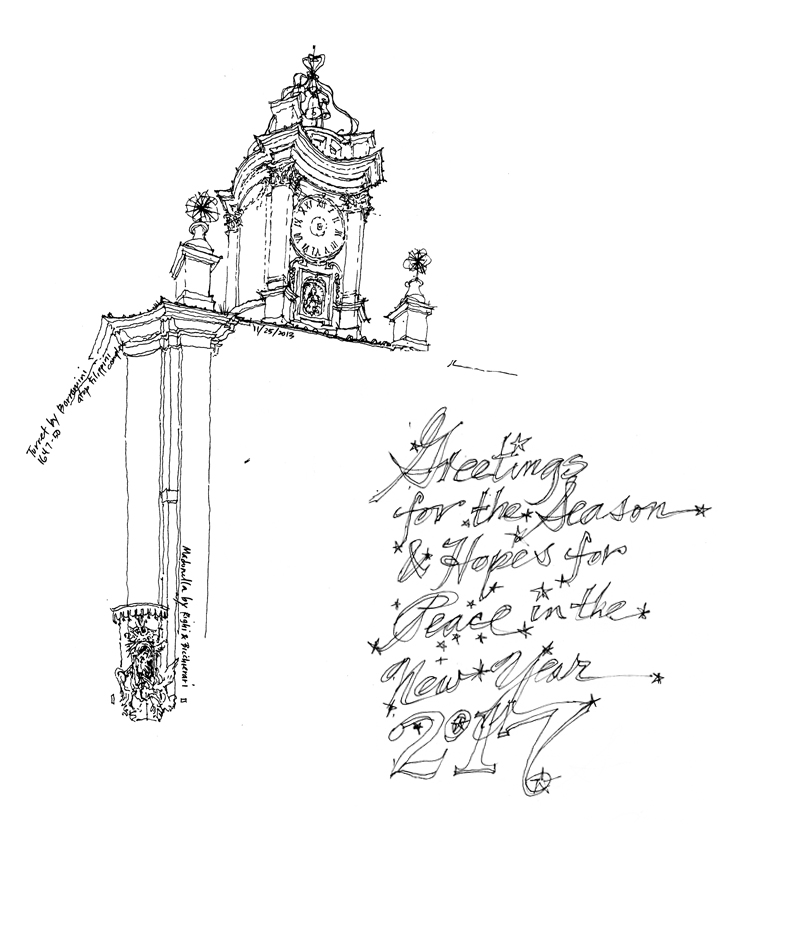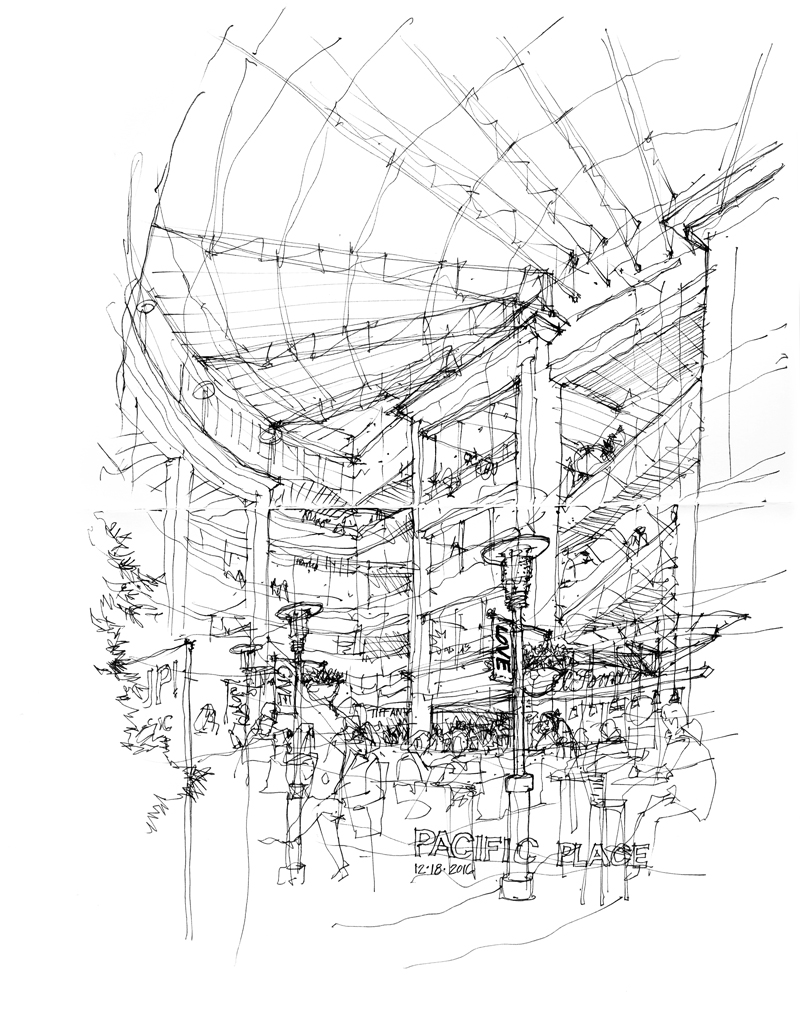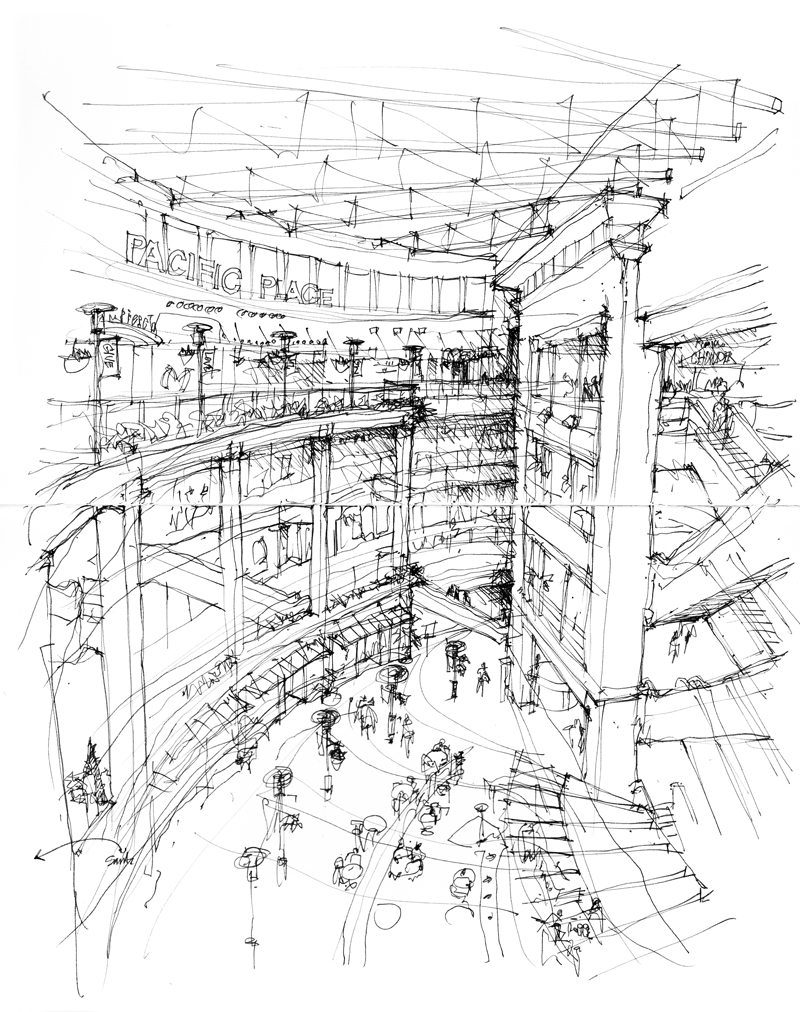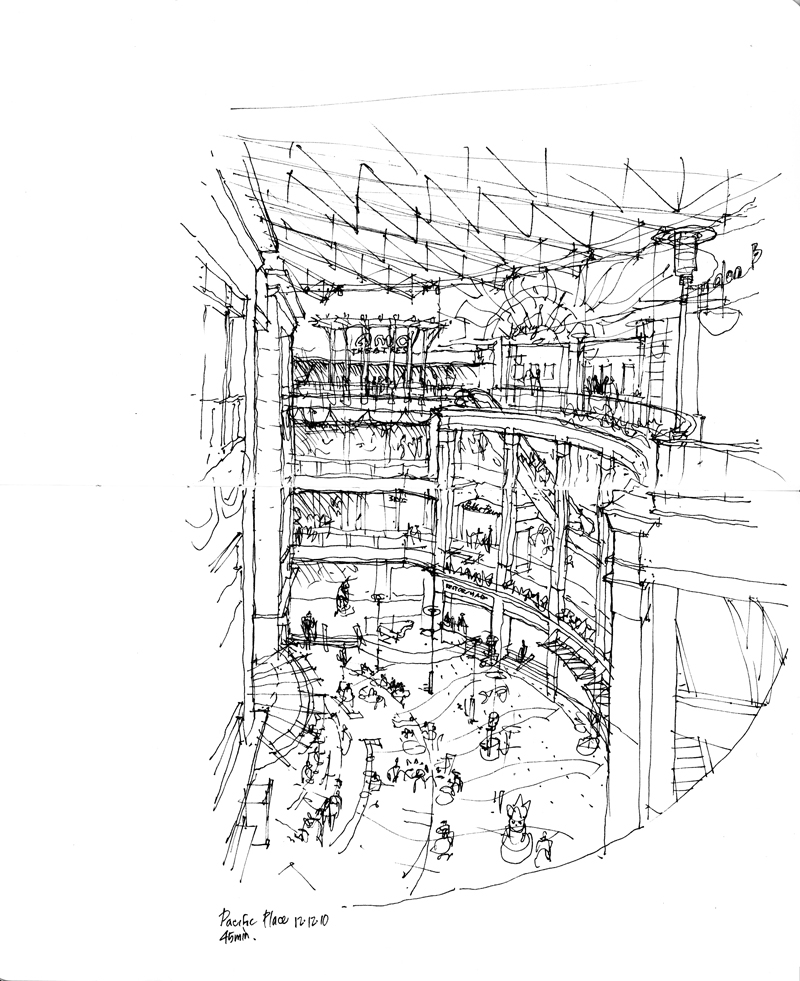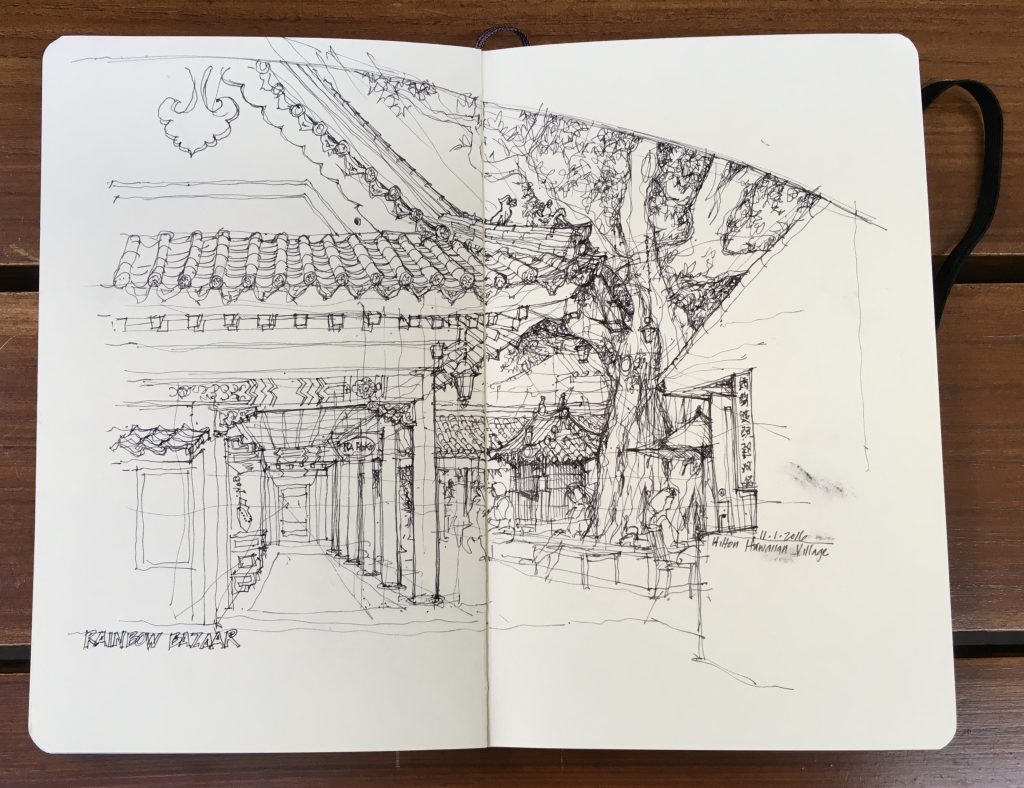To one and all, with hope and optimism for the future…
Monthly Archives: December 2016
Greetings of the Season
Pacific Place: Looking Up, Looking Down
Today, the Seattle Times had an article in their Pacific NW magazine about the popularity of malls in this area. The piece leads off with the statement that, unlike other parts of the country, “Local malls are…thriving, thanks to Seattle’s strong economy, all the people moving here and the fact that don’t have too many.” And so it was a coincidence that the Seattle Urban Sketchers group met this morning at Pacific Place in downtown Seattle, a vertical shopping mall with a four-story, semi-cylindrical atrium space. The first view is looking up into the atrium while the second view is looking down from the top floor. The third view is a similar view looking down from the opposite end of the atrium, but done 6 years ago.
Honolulu Hale
When Joseph Fern became mayor of the City & County of Honolulu in 1907, he began a campaign to build a permanent city hall. Unfortunately, it was not until 1928, eight years after Fern’s death, that the idea came to fruition. Several local architects—C.W. Dickey, Hart Wood, Robert Miller, and Rothwell Kangeter & Lester—contributed to the design of the Spanish Colonial Revival style structure, which has an interior courtyard, staircase, and open ceiling modeled after the Bargello in Florence.
Originally called the Honolulu Municipal Building, today it is known as Honolulu Hale (Honolulu House) and is the official seat of government of the city and county, including the Mayor’s office and the City Council chambers. In 1978, Honolulu Hale was listed as a contributing property to the Hawaii Capital Historic District, which is listed on the National Register of Historic Places and includes Iolani Palace, Kawaiahaʻo Church, and the Territorial Building.
The Rainbow Bazaar
This is a view of a courtyard in the Rainbow Bazaar in the Hilton Hawaiian Village Hotel in Waikiki, dominated by a huge banyan tree. The resort hotel was originally conceived of and built by Fritz Burns and industrialist Henry Kaiser in 1955 on the site of the old Niumalu Hotel and eight oceanfront acres of the Ena Estate at the Ewa end of Waikiki. Over time, the hotel complex grew to 22 acres and was purchased by Conrad Hilton.
Growing up in Hawaii, my exposure to the world beyond Oahu’s shores was illuminated through books, movies, and TV shows. And so when the Rainbow Bazaar was created as part of the hotel complex in 1970, I was fascinated by the faux Asian environment, which included replicas of a Thai temple and a Japanese pagoda, as well as an entire Japanese farmhouse shipped from Japan. While some may criticize the appropriation of Asian culture to sell ethnic and tourist goods, for me walking through the Rainbow Bazaar even today is an opportunity to imagine and re-imagine visiting foreign places.

